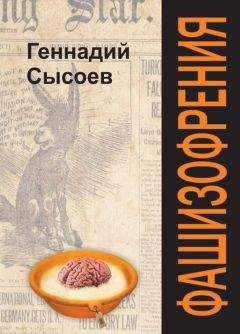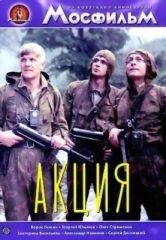Пер Рудлинг - ОУН и УПА: исследования о создании "исторических " мифов. Сборник статей
40
Karel Berkhoff, Harvest of Despair: Life and Death in Ukraine under Nazi Rule (Cambridge, Mass.: Harvard University Press, 2004), 83.
41
Stanislav Kul’chyts’kyi et al., eds., OUN v 1941 rotsi. Dokumenty. V 2-kh ch. Ch. 1. (Kiev: Instytut Istorii Ukrainy NAN Ukrainy, 2006), 43, citing OUN v svitli postanov Velykykh Zboriv, Konferentsii ta inshykh dokumnetiv z borot’bi 1929–1955 r. [Zakordonni chastyny Orhanizatsii Ukrains’kykh Natsionalistiv] (1955), 24–47.
42
Kul’chyts’kyi, OUN v 1941 rotsi (2006), 159, 165, citing “Propahadnyvni vkazivky na peredvoennyi chas, na chas viiny i revoliutsii ta na pochatkovi dni derzhanvoho budivnytstva z Instruktsii Revolutsiinoho Provodu OUN (S. Bandery) dlia orhanizatsiinoho aktyvu v Ukraini na period viiny “Borot’ba i diialnist’ OUN pid chas viiny,” Tsentral’nyi Arkhiv Orhaniv Vlady Ukrainy (henceforth TsDAVO Ukrainy), f. 3833, op. 2, spr. 1, ark. 77–89.
43
Iu. Mylianych, “Zhydy, sionizm i Ukra)na,” 271–276; Devius [D. Dontsov], “Voiuiuchyi sionizm,” Literaturno-naukovyi visnyk, no.10 (1929): 915–918; S. Narizhnyi, “Chuzhi narody v svitli ukrain’skykh prykazok,” Literaturno-naukovyi visnyk, no. 10 (1929): 921–926; Martynets’, Zhydivs’ka problema.
44
Philip Friedman, “Ukrainian-Jewish Relations During the Nazi Occupation,” YIVO Annual of Jewish Social Science, 12 (1958–1959): 184; John-Paul Himka, “Krakivski visti and the Jews, 1943: A Contribution to the History of Ukrainian-Jewish Relations during the Second World War,” Journal of Ukrainian Studies 21, (Summer — Winter 1996): 81–95.
45
File of Mikhail Dmitrievich Stepaniak, HDA SBU f. 6, d. 1510, tom 1, l. 65.
46
Ivan Katchanovski, “Terrorists or National Heroes” Nationalities Papers (forthcoming), citing The Henry Field Papers, Franklin D. Roosevelt Library, Hyde Park, New York, box 52, folder “1964,” and Pavel Sudoplatov, Spetsoperatsii: Lubianka i Kreml’ 1930–1950 gody (Moscow: OLMA-Press, 1998/2003), 26; Yelena Novoselova, “Stepan Bandera: As Seen by Russian and Ukrainian Researchers,” Den’, April 29, 2010: http://day.kiev.ua/296328/ (accessed April 30, 2010).
47
DARO, Delo Stepana Ianishevskogo, microfi lm no. 124148, cited by Viktor Polishchuk, “Gora rodila mysh’. Banderovskuio,” in Vladimir Vorontsov, ed., “OUN-UPA. S kem i protiv koho oni voevali”: istoriko-dokumental’nye ocherki (Sevastopol: Mezhregional’naia obshchestvennaia organizatsiia “Ob’edinenie patriotov Sevastopol’ia,” 2011), 74; and Lucyna Kulisnka, “Dzialnosc terrorystyczna ukrainskich organizacji nacjonalistycznych w Polsce w okresie miedzywojennym,” Biuletyn instytut pamieci narodowej, no. 7–8 (116–117) (July — August 2010): 57, n. 40.
48
File of Mikhail Dmitrievich Stepaniak, HDA SBU, f. 6, d. 1510, tom 1, l. 67.
49
Mary Heimann, Czechoslovakia: The State That Failed (New Haven, Conn.: Yale University Press, 2009), 112.
50
Yeshayahu Jelinek, The Parish Republic: Hlinka’s Slovak People’s Party, 1939–1945, East European Monographs 14 (New York: Columbia University Press, 1976), 48. The anti-Semitic Slovak constitution, “Ústavnэ zákon zo d*a 21. Júla 1939 o ústave Slovenskej republiky,” is available online, on the website of the Slovak Nation’s Memory Institute: http://www.upn.gov.sk/data/pdf/ustava1939. pdf (accessed Dec. 30, 2008). Thanks to Nina Paulovicova for these references.
51
In Croatia, German support for Slovak statehood strengthened the pro-German wing of the Ustaše movement and signifi cantly increased its production of anti-Semitic propaganda material. On the racialist ideology of the Ustaše movement, see Tomislav Duli! Utopias of Nation: Local Mass Killing in Bosnia and Herzegovina, 1941–1942 (Uppsala: Acta Universitatis Upsalensis, 2005).
52
Heimann, Czechoslovakia,106–108; Serhii Yekelchyk, Ukraine: Birth of a Nation (Oxford: Oxford University Press, 2007), 131.
53
Mel’nyk assured von Ribbentrop that the OUN was “ideologically related to similar movements in Europe, in particular National Socialism in Germany and Fascism in Italy [weltanschaulich verwandt mit den gleichartigen Bewegungen Europas, insbesondere dem Nationalsozialismus in Deutschland und dem Fascismus in Italien].” Auswärtiges Amt Archive, PA AA, R 104430, Po. 26, No. 1m Pol. V. 4784, p. 2. Thanks to Ray Brandon for this reference.
54
The Ustaša “resurrection” of Croat statehood appears to have served as a model for the OUN. The proclamation was not delievered by Paveli! himself, but his deputy, (Doglavnik) Slavko Kvaternik. “People of Croatia! The providence of God, the will of our allies, the century-old struggle of the Croatian people, our self-sacrifi cing Leader [Poglavnik] Ante Paveli! and the Ustaša movement within and outside the country has decided that we today, on the eve of the resurrection of the son of God also will witness the resurrection of our Croatian state.” Kvaternik referred to “the will of our allies,” but without explicitly mentioning Hitler. Later that day, Kvaternik sent a telegram to Hitler, to thank him “in the name of the Croatian people for the protection the German army has given the Croat national rebellion and [to] request your recognition of the Independent State of Croatia by the Greater German Reich. Long live the Führer of the German people!” Zlo'ini Nezavisne Države Hrvatske, 1941–1945 (Belgrade: Vojnoistorijski institut, 1993), document 3 (the declaration) and 4 (the telegram). Thanks to Tomislav Duli! for this reference.
55
R. J. B. Bosworth, The Oxford Handbook of Fascism (Oxford: Oxford University Press, 2009), 431.
56
“Natsionalistychnyi rukh pid chas Druhoi Svitovoi Viiny: Interv’iu z B. Levyts’kym,” Diialoh: Za demokraiiu i sotsializm v samostiinii Ukraini, Vol. 2 (1979): 15.
57
Kul’chyts’kyi, OUN v 1941 rotsi (2006), 10. Similar attitudes were found in the OUN(b). In 1942, an OUN activist elaborated further on the size and scope of the Ukrainian state: “It will cover the lands from the Volga to the Carpathians, from the mountains of the Caucasus and the Black Sea to the sources of the Dnieper, a territory of one million square kilometers. This will be a deciding factor for the solution of the eastern problems in regards to Russia and the Baltic States, Poland, the Caucasus, the Black Sea states, and also the path to Africa and India through the Bosporus and the Dardanelles. Ukraine for the Ukrainians! This will be a Great United National State.” Derzhavnyi Arkhiv Rivenskoi oblasti, inv. nomer 326, cited in Vorontsov,“OUN-UPA,”10.
58
In 1938–1939, senior OUN functionary Colonel Roman Sushko toured Canada. According to the RCMP, Sushko “had adopted many of Hitler’s mannerisms when delivering speeches.” Sushko boasted that “the nationalist movement is so powerful that we will soon see the emergence of a Great Ukrainian State from the Caspian Sea to the Tatra Mountains.” Orest T. Martynowych, “Sympathy for the Devil: The Attitude of Ukrainian War Veterans in Canada to Nazi Germany and the Jews, 1933–1939,” in Rhonda L. Hinter and Jim Mochoruk, eds., Re-imagining Ukrainian Canadians: History, Politics, and Identity (Toronto: University of Toronto Press, 2011), 186. After the 1940 split, Sushko sided with the OUN(m). He was murdered in 1944, a murder his family attributes to the OUN(b). Myron B. Kuropas, “Who shot Col. Sushko?” The Ukrainian Weekly, March 1, 2009, 7.
59
See for instance Aristotle Kallis, Genocide and Fascism: The Eliminationist Drive in Fascist Europe (New York: Routledge, 2009), and Marius Turda, The Idea of Natonal Superiority in Central Europe, 1880–1918 (New York: Edwin Miller, 2005).
60
Mykola Stsibors’kyi, Natsiokratsiia (n.p.: Ukr. Vyd-vo “Proboiem,” 1942). For a discussion of natsiokratsiia, see Roman Dubasevych, “Ukraina abo smert’,” in Amar, Balyns’kyi, and Hrytsak, Strasti za Banderoiu, 17–36.
61
Rossolinski-Liebe, “The ‘Ukrainian National Revolution,’” 87.
62
For Romania, see Vladimir Solonari, Purifying the Nation: Population Exchange and Ethnic Cleansing in Nazi-Allied Romania (Washington D.C.: Johns Hopkins University Press, 2010). On Slovak minority policies, see Heimann, Czechoslovakia, 112; on Croatia, see Duli! Utopias of Nation.
63
Roman Shukhevych, leader of both the OUN(b) and the UPA, served in various Nazi German units from 1938 until 1943. He received training at the German Military Academy in Munich in 1938, in 1939–1940 he was joined by 120 other Ukrainian nationalists at a Gestapo training camp in Zakopane. Berkhoff, Harvest of Despair, 289, 298; Breitman and Goda, Hitler’s Shadow, 74, 91; Jeffrey Burds, The Early Cold War in Soviet West Ukraine, 1944–1948, Carl Beck Papers in Russian and East European Studies 1505 (Pittsburgh: University Center for Russian and East European Studies, 2001), 68.
64
Kul’chyts’kyi, OUN v 1941 rotsi (2006), 12 and 61, citing “Borot’ba i diial’nist’ OUN pid chas viiny: Politychni vkazivky (traven’ 1941 r.),” in OUN v svitlui povstanov Velykykh Zboriv, Konferentsii ta inshykh dokumentiv z borot’bi 1929–1955 r. [Zakordonni chastyny Orhanizatsii Ukrains’kykh Natsionalistiv] (1955), 48–57.
65
Tomasz Szarota, U progu Zaglady: Zajscia anty(ydowskie i pogromy w okupowanej Europie: Warszawa, Pary(, Antwerpia, Kowno (Warsaw: Wydawnictwo “Sic!” 2000), 210–214, and Peter Longereich with Dieter Pohl, ed., Die Ermordung der europäischen Juden: Eine umfassende Dokumentation des Holocaust 1941–1945 (Munich: Piper, 1989), 118–119. An analogous development also took part among profascist émigré groups in Germany. On March 19, 1941, they urged the Jews to leave Lithuania, so that “there would not be any unneccessary victims.” In Berlin on May 10, 1941, the so-called Lithuanian Activist Front (LAF) presented its völkisch ideological program, which accused the Jews collectively of having destroyed Lithuania and emphasized that “communism is directly rooted in Judaism.” Klaus-Peter Friedrich, “Spontane Volkspogrome oder Auswüchse der NSVernichtungspolitik?: Zur Kontroverse um die Radikalisierung der antijüdischen Gewalt im Sommer 1941,” Jewish History Quarterly (Kwartalnik Historii)ydów), no. 4 (2004): 591.
66
TsDAVO Ukrainy, f. 3833, op. 1, spr. 12, l. 10, Telegram Iaroslav Stest’ko no. 13, 25.6.1941.
67
“Instruktsii Revolutsiinoho Provodu OUN(B) dlia orhanizatsiinoho aktyvu v Ukraini na period viiny. “Borot’ba i diial’nist’ OUN pid chas viiny” V. Viis’kovi instruktsii,” TsDAVO Ukrainy, f. 3833, op. 2, spr. 1, ark. 25–33.
68
Ivan Patryliak, “Viiskovi plany OUN(B) u taemnii instruktsii Revoliutsiinoho provodu (traven’ 1941 r.) “Borot’ba i diial’nist’ OUN pid chas viiny,” Ukrains’kyi Istorychnyi Zhurnal’, no. 2 (2000): 136.
69
“Instruktsii Revoloiutsiinoho Provodu OUN(B) dlia orhanizatsiinoho aktyvu v Ukraini na period viiny. “Borot’ba i diialnist’ OUN pid chas viiny” H. Vkazivky na pershi dni orhanizatsii derzhavnoho zhyttia,” TsDAVO Ukrainy, f. 3833, op. 2, spr. 1, ark. 33–57.
70
Berndt Boll, “Z" oczów, July 1941: The Wehrmacht and the Beginning of the Holocaust in Galicia: From a Criticism of Photographs to a Revision of the Past,” in Omer Bartov, Atina Grossmann, and Mary Nolan, eds., Crimes of War: Guilt and Denial in the Twentieth Century (New York: The New Press, 2002), 73.
71
Hannes Heer, “Einübung in den Holocaust: Lemberg Juni/juli 1941” Zeitschrift für Geschichtswissenschaft Vol. 49, 5 (2001): 409–417; Israel Gutman, “Nachtigall Battalion,” Encyclopedia of the Holocaust (New York: Macmillan, 1990).
72
“Ukrains’kyi narode!” OUN(b) fl yer, July 1, 1941, TsDAVO Ukrainy, f. 3833, op. 1, spr. 42, l. 35. See also Dieter Pohl, Nationalsozialistische Judenverfolgung in Ostgalizien 1941–1944: Organization und Durchführung eines staatlichen Massenverbrechens, 2d ed. (Munich: Verlag Oldenburg, 1997), 57.
73
Kul’chyts’kyi, OUN v 1941 rotsi (2006), 11; Himka, “Central European Diaspora,”19.
74
Berkhoff and Carynnyk, “The Organization of Ukrainian Nationalists,” 150.
75
Volodymyr Serhiichuk, ed., OUN-UPA v roky viiny: novi dokumenty i materialy (Kyiv: Vydavnytstvo khudozhnoi literatury “Dnipro,” 1996), 239.
76
Rossoli#ski-Liebe, “The ‘Ukrainian National Revolution’ of 1941,” 99, citing TsDAVO Ukrainy, f. 3833, op. 1, spr. 22, ll. 1–27.
77
Gabriel N. Finder and Alexaner V. Prusin, “Collaboration in Eastern Galicia: The Ukrainian Police and the Holocaust,” East European Jewish Affairs, 34, no. 2 (2004): 102; Berkhoff and Carynnyk, “The Organization of Ukrainian Nationalists,” 171.
78
Rossolinski-Liebe, “The ‘Ukrainian National Revolution’ of 1941,” 100. Similar attitudes were found within the OUN(m). Its organ Selians’ka dolia described the Jews as enemies, who “had to leave the land or die on it. The Muscovite, the Pole, and the Jew were, are, and will always be your enemies.” Amir Weiner, Making Sense of War: The Second World War and the Fate of the Bolshevik Revolution (Princeton, N.J.: Princeton University Press, 2001), 242–243, citing TsDAHO Ukrainy, f. 57, op. 4, d. 369, l. 63.




